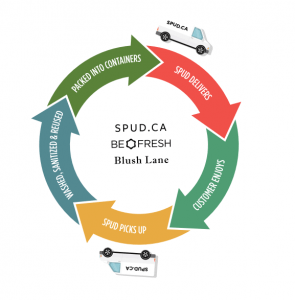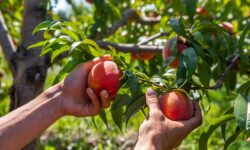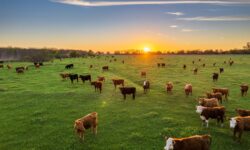Extreme weather throughout the year will cause a shortage of stone fruit in BC: We…
Everywhere you turn it seems people are talking about single-use packaging and products that are getting piled high in foreign countries, escaping into our oceans, or being incinerated (burned) here at home. In response, communities, governments and businesses are looking for innovative ways to address this rising concern- from engineering new plastics that are made from plants to improving our recycling streams, but are we over-complicating the issue?
Addressing Symptoms vs. Root Causes
Although bioplastics (plastics made from organic matter) and improving our recycling streams are definitely a step in the right direction, they will never solve our pollution problem. These two strategies will help reduce our levels of waste since they address the symptom of the problem, but they are not addressing the problem itself: the Take-Make-Dispose problem.
The Take-Make-Dispose model is defined as the economic activity of extracting resources from our earth to make products that are designed to be disposed of after being used. This model is problematic for two reasons:
- Our consumption levels are demanding more resources than what our planet is able to replenish at a sustainable rate. This causes resource constraints and unmanageable damage to our environment.
- We are creating high levels of waste that cannot be reintegrating into the natural environment. This causes mass amounts of garbage that disrupt the health of our environment.
Creating bioplastics and improving our recycling steams do not solve these problems because they still follow the take-make-dispose model instead of tackling the root issue. There is a solution that does address the problem of high consumption and mass waste and guess what, you are probably already doing it!
A Circular Economy
A circular economy model is based on three principles: (1) eliminating waste, (2) keeping products in use, and (3) regenerating natural systems. I’ll give a couple examples so you can understand what this model looks like in your life:
1. Using reusable packaging! If it is made from recycled material, it’s even better. Check out our selection on Spud.
2. Regrow your leftover veggie scraps or turn them into compost for your garden!
3. Shop with us! When you order your groceries through Spud, we deliver your order in reusable packaging that is later picked up, washed, and reused the next time you order.

4. My personal favourite: Instead of disposing of the next thing that breaks in your house, do a quick google or youtube search of “how to repurpose broken [name the product].” You’ll be surprised at some of the creative ways people on the internet have made a new function out of something old.
Like the sustainability team does for Spud, I encourage you to continue to explore ways you can reduce your consumption of single-use products everyday. Every step we take to support a circular economy, rather than a linear Take- Make-Dispose model, makes a difference!
Have a tip on more ways to support a circular economy? Email us at sustainability@spud.com.
Sources:
(1) Britten, Liam. “Trash and burn: Metro Vancouver will incinerate Canadian garbage returned by Philippines.” CBC News. https://www.cbc.ca/news/canada/british-columbia/philippines-garbage-canada-1.5149645.
(2) Eriksen, Marcus, et al. “Microplastic: what are the solutions.” Freshwater Microplastics. Springer, Cham (2018): 273-298.
(3) Ellen MacArthur Foundation. “Concept: what is a circular economy” https://www.ellenmacarthurfoundation.org/circular-economy/concept.




